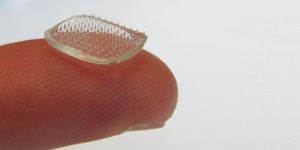
Substance P, a natural substance produced in the central nervous system and peripheral nervous system, is known to activate pain. However, new research shows that the substance only causes pain in the central nervous system - and actually acts as a painkiller in the peripheral nervous system.
This research points to why many painkillers have failed to pass clinical trials over the last 20 years. These failed drugs successfully targeted Substance P in the lab. Yet, in clinical trials, they ended up unintentionally suppressing the substance’s ability to kill pain in the peripheral nervous system. Thus, after much funding, the drugs would always mysteriously fail.
Substance P works as a painkiller in the peripheral nervous system by dampening the nerve cells' responsiveness and excitability. Oppositely, Substance P drives pain in the central nervous system by triggering signals that excite neurons.
"We were really surprised by the results,” said lead researcher Nikita Gamper, from the University of Leeds. "Substance P is described in the literature as a molecule that gets nerve cells excited and promotes pain. But we've discovered a paradox - that in the peripheral nervous system, it acts as one of the body's natural painkillers and actually suppresses pain."
"Drugs like morphine hijack the body's natural painkilling mechanisms, such as… endorphins,” said lead researcher Nikita Gamper, from the University of Leed. However, because such drugs “act within the central nervous system, they can affect other brain cells that use similar pathways, leading to side effects such as addiction or sleepiness."
Gamper is now focusing on Substance P’s role in chronic pain. "If we could develop a drug to mimic the mechanism that Substance P uses, and ensured it couldn't pass the blood-brain barrier into the CNS, … it's likely it could suppress pain with limited side effects,” Gamper said.
The research was openly published in the journal
Antioxidants & Redox Signaling.
Sources:
"Redox-Dependent Modulation of T-Type Ca2 Channels in Sensory Neurons Contributes to Acute Anti-Nociceptive Effect of Substance P” in the journal
Antioxidants & Redox Signaling,
University of Leeds press release via Science Daily









